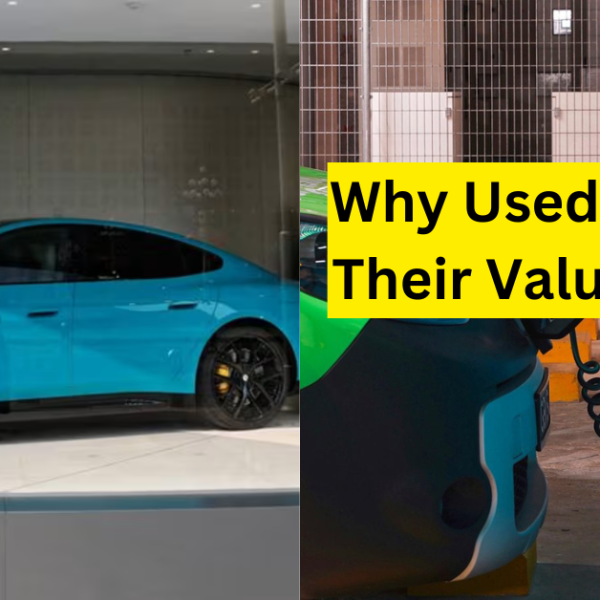From October 1, 2024, Singaporean drivers crossing into Malaysia will be required to have a Vehicle Entry Permit (VEP) installed in their vehicles.
This radio frequency identification (RFID) tag is now mandatory for all foreign-registered vehicles entering Malaysia, allowing authorities to track vehicles and ensure outstanding fines and tolls are settled before they leave the country.
However, with the initial enforcement being rolled out in phases, what happens if you enter Malaysia without a VEP after this date?
Initial Phase of VEP Enforcement
Although October 1st marked the official start of VEP implementation, drivers without the permit have been granted some leniency.
According to Malaysia’s Road Transport Department (JPJ), the enforcement of the VEP requirement will be “executed in phases.”
This means that from October 1st, those entering Malaysia without a VEP will not be immediately penalized but will instead receive reminders or warnings to install the permit.
In fact, according to an article published by CNA, many Singaporean drivers who crossed into Johor Bahru on the first day of enforcement reported smooth, light traffic and no reminders or warnings from Malaysian authorities about their lack of VEP.
This phased approach to enforcement appears to give drivers time to register for the VEP without facing immediate fines or penalties.
However, drivers should not be complacent, as authorities have made it clear that enforcement will tighten over time.
Consequences for Non-Compliance
Under Malaysia’s VEP policy, foreign-registered vehicles entering the country without the RFID tag could face a fine of up to RM2,000 (S$484) or up to six months in jail.
While these penalties have not yet been fully enforced, they remain in place, and drivers should be prepared for stricter enforcement in the near future.
For now, those without a VEP are being allowed to enter Malaysia with just a reminder to complete the registration process.
However, as JPJ officials have stated, warnings and reminders will be increased in the coming months. Drivers may receive these notices either at land checkpoints or at other locations in Johor Bahru.
In an effort to avoid scaring away Singaporean drivers, Malaysian authorities are encouraging them to continue entering the country and have their VEP tags installed at designated centers.
The Importance of Installing a VEP
While the initial leniency may be a relief for some drivers, it is crucial to understand the long-term importance of installing a VEP.
The RFID tag serves not only as a tracking system but also as a means for the Malaysian government to ensure that all fines, tolls, and other charges are settled before drivers leave the country.
This helps prevent foreign-registered vehicles from leaving Malaysia with unpaid traffic fines or fees.
Once the VEP system is fully enforced, those who continue to enter Malaysia without the permit could face significant penalties. JPJ has also indicated that the VEP system may be used to monitor foreign vehicles for outstanding traffic fines, with enforcement expected to begin on January 1, 2025.
Lighter Traffic and Reduced Queues at VEP Centers
Despite concerns about potential congestion at the Causeway due to the new VEP policy, traffic on October 1st was lighter than usual.
Many drivers reported shorter wait times at both the Woodlands Causeway and the Tuas Second Link.
The reduced traffic could be due to drivers adopting a wait-and-see approach, cautious about crossing the border without a VEP.
Additionally, VEP centers in Johor Bahru, which had previously seen long queues, were quieter on the first day of enforcement.
According to CNA, only about 40 drivers were at the Danga Bay VEP center on October 1st, compared to more than 100 just two weeks earlier.
How to Apply for a VEP
For Singaporean drivers who have not yet applied for a VEP, the registration process can be completed online at the official website (vep.jpj.gov.my).
The process requires submitting vehicle details, including the vehicle log card, which can be retrieved from Singapore’s Land Transport Authority (LTA).
Once approved, drivers can choose to have the RFID tag mailed to them or collect it in person at one of the VEP centers in Johor Bahru.
With the tag installed, drivers can use the RFID system to pay for tolls and road charges in Malaysia via their TouchNGo e-wallet, streamlining the process of crossing the border.
Conclusion: Avoid Penalties by Acting Soon
Although the initial phase of VEP enforcement allows some flexibility, Singaporean drivers should not delay in completing the registration process.
With the possibility of fines and stricter enforcement looming, it is essential to ensure compliance before penalties are imposed.
By applying for and installing a VEP tag, drivers can avoid potential fines, ensure smooth border crossings, and comply with Malaysia’s new regulations.
Don’t wait until enforcement tightens—get your VEP installed as soon as possible.
Have a story to share?
Accidents occur frequently, but as responsible road users, we can collectively contribute to reducing their frequency.
If you or someone you know has a video or story to share, please do not hesitate to email us at writer@roads.sg
Together, we can all contribute to creating safer roads for everyone.
================
Get comprehensive cover at a lower price today! Receive up to S$400 worth of petrol vouchers with AIG. T&Cs apply. Protected up to specified limits by SDIC.
Get a quote now! www.aig.sg/roads








